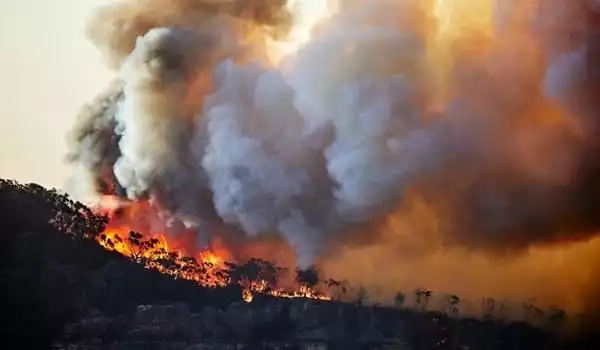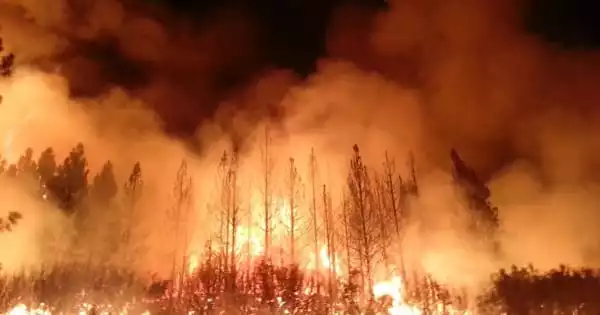According to findings published in eLife, women exposed to smoke from landscape fires during pregnancy are more likely to have babies with low or very low birth weights. Between 2007 and 2012, smoke from wildfires may have contributed to thousands of additional premature births in California. The findings highlight the importance of reducing the risk of large, extreme wildfires and suggest that pregnant women avoid very smoky air.
The study is the first to show a link between low birth weight and fire smoke exposure in low and middle-income countries (LMICs), where 90% of low birth weight infants are born and landscape fires are common.
Landscape fires, such as wildfires, tropical deforestation fires, and agricultural biomass burning, are critical to the survival of terrestrial ecosystems. Nonetheless, landscape fire smoke is causing a costly and growing global public health problem, resulting in recurring episodes of pollution that primarily affect LMICs.
Previous research has linked prenatal exposure to low birth weight, which is a public health issue in low-income countries. One of the World Health Organization’s global targets for 2025 is to reduce the risk of low birth weight.
Several studies have shown that landscape fire smoke has an effect on acute lung and heart conditions, but the health effects of these pollutants on vulnerable pregnant women are unknown. We wanted to look into the relationship between birth weight and exposure to fire source pollution across multiple countries and over a long period of time.
Jiajianghui Li
“Babies with low birth weights are more likely to develop a variety of diseases later in life than normal-weight newborns,” explains co-first author Jiajianghui Li, a PhD student at Peking University’s Institute of Reproductive and Child Health, School of Public Health Science Centre. “Several studies have shown that landscape fire smoke has an effect on acute lung and heart conditions, but the health effects of these pollutants on vulnerable pregnant women are unknown. We wanted to look into the relationship between birth weight and exposure to fire source pollution across multiple countries and over a long period of time.”
The researchers carried out a case-control study in 54 low-income countries, matching 108,137 groups of siblings to their mothers. They collected data on sibling birth weights and other health and demographic factors using surveys conducted by the US Agency for International Development between 2000 and 2014. They then assessed exposure to landscape fire pollutants using data from the Global Fire Emission Database and a model that converted this data into ground-surface particulate matter concentrations in various regions.

The smallest and deadliest type of particle pollution, known as PM 2.5, is abundant in wildfire smoke. These toxic soot specks, or particulate matter, are so fine that they can penetrate deep into the lungs and enter the bloodstream, just like the oxygen molecules we need to survive.
Their research found that an increase in exposure to fire-sourced particulate matter of one microgram per cubic metre was associated with a 2.17-gram reduction in birth weight.
“The effect was even more pronounced when we looked at whether exposure to fire smoke was linked to low or very low birth weight; for every microgram per cubic metre increase in particulate matter exposure, the risks of low and very low birth weight increased by around three and twelve per cent, respectively,” says co-first author Tianjia Guan, an assistant professor at the Department of Health Policy, School of Health Policy and Management, Chinese Academy of Medical Sciences.
The researchers discovered that extremely low birth weight was most strongly associated with pollution. To figure out why they created a model that looked at the average birth weight of infants in single-parent households. Newborns in families with lower average birth weights were more vulnerable to the risks of fire smoke pollution than those with moderate baseline birth weights.
“This suggests that other factors affecting maternal and foetal health, such as nutrition or maternal employment status, may make mothers and their developing infants even more vulnerable to the risks of pollution,” says co-first author Qian Guo, a PhD student at China’s University of Science and Technology’s School of Energy and Environmental Engineering.
“Our global, sibling-matched study found a link between exposure to landscape fire pollution during pregnancy and lower birth weight in low and middle-income countries,” says senior author Tao Xue, Assistant Professor at Peking University’s Institute of Reproductive and Child Health, School of Public Health Science Centre. “The most vulnerable were newborns from families where lower birth weights were more common. To protect maternal and infant health in these vulnerable populations, it is critical to developing steps that reduce the frequency of landscape fires, such as through climate change mitigation.”
















